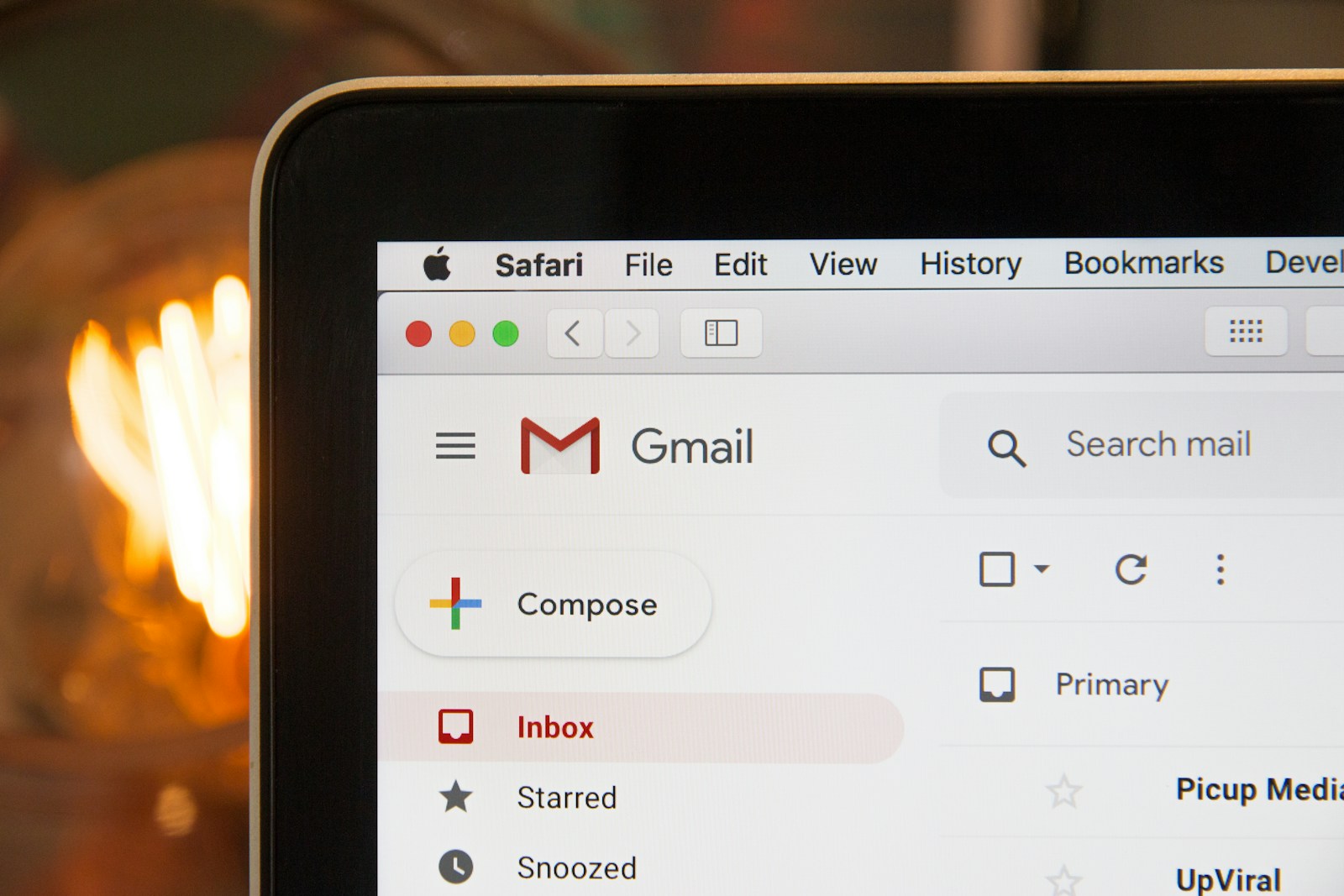Gmail has a folder called “Important” that can help you manage your important emails. It uses an algorithm to determine which emails are a priority based on your interactions with them. These emails are then put into the “Important” folder, separate from the rest of your inbox. You can find this folder on the left side of Gmail. Gmail also uses labels to organize emails, allowing emails to have multiple labels at the same time. Learning how to use these features effectively can help you be more productive in managing your emails. For example, you can turn off the importance markers or create custom filters to make sure that only emails you really care about are marked as important.

Gmail’s “Important” Folder: A Deeper Look
The Basics: What is it?
Gmail’s “Important” folder isn’t a true folder like “Inbox” or “Sent.” It’s a smart label that uses machine learning to predict which emails matter most to you. It scans your emails for certain signals like sender, keywords, and past interactions. Then, it automatically labels emails it thinks are important, making them easy to find.
Why Use the “Important” Folder?

If you get a lot of email, the “Important” folder can be a lifesaver. It helps you quickly prioritize the messages that need your attention, so you don’t miss anything crucial. You can also train Gmail to be more accurate over time by manually marking emails as important or not.
How to Access It
Finding the “Important” folder is simple. It’s usually listed in the left sidebar of your Gmail interface, below your inbox and other labels. If you don’t see it, you might need to enable it in your settings.
Tips and Tricks
- Train Gmail: Mark emails as important or not to help Gmail learn your preferences.
- Use Filters: Create filters to automatically mark certain emails as important based on sender, subject, or other criteria.
- Check Regularly: Don’t forget to check your “Important” folder regularly, as Gmail might misclassify some emails.
- Customize: Adjust the sensitivity of Gmail’s importance filter in your settings.
Limitations
Gmail’s “Important” folder is a helpful tool, but it’s not perfect. It can sometimes misclassify emails, and it relies on your past behavior to make predictions. If your email habits change, you might need to retrain Gmail.
| Pros | Cons |
|---|---|
| Helps prioritize emails | Can misclassify emails |
| Easy to access | Relies on past behavior |
| Can be trained | Requires manual adjustments |
Key Takeaways
- The important folder in Gmail groups emails considered high priority based on user interactions.
- Gmail uses labels instead of folders, enabling emails to be categorized in multiple ways.
- Customizing importance markers and filters can fine-tune what is classified as an important email.
Understanding Gmail Folders and Labels
Gmail’s organization system might seem complex, but understanding its structure can make managing your emails much simpler.
Difference Between Folders and Labels
In Gmail, labels act as tags that help classify emails without moving them from the inbox, while folders are a more traditional way of storing emails. An email can have multiple labels but can’t be in more than one folder at the same time.
The Importance of the Important Folder
The “Important” folder in Gmail uses markers to sort your messages based on Google’s algorithms and your email handling. These markers learn from your habits—emails you open often are marked as important. Filtering messages to this folder helps in prioritizing your workflow.
Customizing Your Gmail Inbox
Tailor your Gmail experience by creating new labels from the Labels tab in settings. You can filter messages into these labels to tidy your inbox. Setting up a new filter involves specifying criteria such as the sender, keywords, or date ranges, directing emails to labels as they arrive.
Managing Emails with Gmail Features
Gmail offers a variety of tools for keeping your email organized. These features can help you sort your inbox, prioritize important messages, and maintain a clutter-free email experience.
Using Importance Markers and Filters
Gmail’s importance markers operate via algorithms that monitor how you interact with different emails. To activate these markers, go to the settings menu in your Gmail account and search for the importance markers option. By turning this on, Gmail will highlight emails it thinks are key messages. Besides, you can apply filters for incoming email by creating a rule that automatically sorts new messages based on specific criteria such as sender, keywords, or subject lines.
Organizing Emails with Labels
Labels in Gmail function like folders but with a twist: you can tag a single email with multiple labels. For instance, one email could be labeled both “Work” and “Urgent.” To use labels in the Gmail app or on a desktop computer, look for the labels tab in the settings menu of your Gmail account. Labels can help you categorize emails by project, urgency, or any other system that suits your workflow.
How to Create and Delete Labels
Creating a label is straightforward. On the left-hand side of your Gmail screen, you’ll find an option to “Create new label.” Tik this, enter your label’s name, and hit “Create.” If you need to get rid of a label, that’s easy too. Simply find the label you want to delete, click on the three dots beside it, and select “Remove label” to make it disappear from your list.
Tips for Handling Unwanted Emails
An overload of irrelevant emails can be exhausting. To keep your inbox clear, use the unsubscribe feature when reading an email from a sender you no longer want to hear from. Moreover, by setting email filters, you can automatically direct these unwanted messages to trash or a specific folder, which you can review and clear out periodically. Remember to routinely clean up your inbox by deleting messages that are no longer needed. Be proactive with filters and the unsubscribe tool to manage the influx of incoming emails effectively.
Frequently Asked Questions
In this section, we tackle some common questions about managing the Important folder in Gmail to help you take control of your email organization.
How can I prevent emails from being labeled as Important automatically in Gmail?
Gmail might mark some of your incoming emails as Important. To stop this, go to Settings, then click on the ‘Inbox’ tab. You’ll see ‘Importance markers’ – choose ‘No markers,’ and in ‘Filtered mail,’ you should select ‘Don’t override filters.’
What steps are needed to remove the Important label from emails on an Android device using Gmail?
If you’re using Gmail on an Android device, open the app and find an email with the Important label. Open the email, tap the three dots in the upper right corner, and select ‘Remove from Important.’ This will unmark the email.
Is there a way to permanently delete the Important label from Gmail on an iPhone?
Currently, Gmail does not allow users to delete the Important label completely because it’s a system label. But you can hide it by going to your Gmail settings on the iPhone, selecting your account, choosing ‘Label settings,’ finding the Important label, and removing the show in IMAP option.
Can the visibility of the Important folder in Gmail be adjusted or turned off?
To adjust the visibility of the Important label on the web, open Gmail, head to Settings, and click ‘Labels.’ Next to the Important label, you can click ‘hide’ if you don’t want it to show, or ‘show’ if you do want it visible in the label list.
What is the method for manually marking an email as important before sending it in Gmail?
Before you send an email in Gmail, you can’t manually mark it as important. But you can ask the recipient to mark your email as important when they receive it, which might help similar emails to be marked as important in the future.
What are the consequences of deleting emails from the Important folder in Gmail?
Emails removed from the Important label are still in your inbox unless you delete them. Remember, deleting an email from any label will send it to the Bin/Trash, and after 30 days, it will be permanently erased from Gmail.







